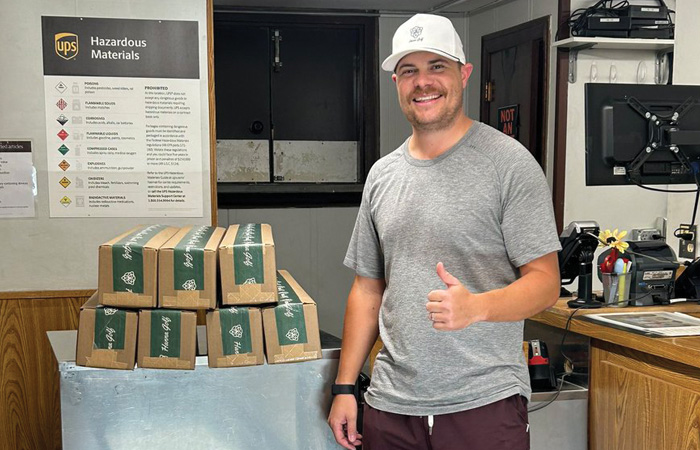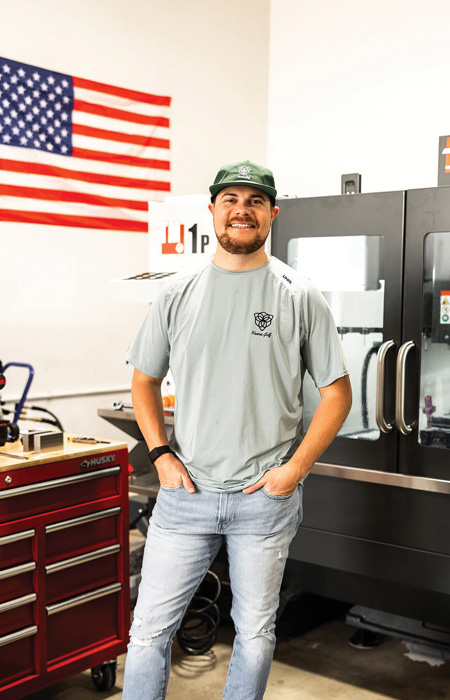Golf Science – Chasing a Dream

The world is often full of stories about war and famine and disease and sadness, so it’s always nice to hear a sweet story about how a small-town guy empties the family coffers on a chance and makes a place for himself in the competitive golf market.
Jared Doerfler’s story began when his dad taught him the game of golf at age five in Northern Iowa. On summer nights, father and son would go out for a round, and soon Jared began playing a lot of golf with his grandfather, Harry Doerfler, as well. Harry was a typical product of his times. He grew up dirt poor in the Texas panhandle, was dropped into World War II, and subsequently “worked his tail off,” in Jared’s words, to give his kids a better life.
With all those years of golf, Jared walked onto a small Division I school’s golf team when he attended the University of Northern Iowa. His time there, he said, had a profound effect on his life. While in college, one of the stand-out experiences was when the coaches took team members to their putting lab to evaluate their strokes. He was told that the putter he was using – a blade – was not the ideal one for him and that he needed a putter with a mallet-shaped head. Doerfler’s coach then handed him an old prototype of a mallet putter he had once found in an equipment truck at some PGA TOUR event.
Upon graduating from Northern Iowa, Doerfler returned the putter to the coach, then spent the next 10 years searching everywhere for that type of putter, including on Craig’s List, eBay and everywhere else. Eventually he gave up, sketched the putter from memory, then had the putter milled at a machine shop. “I didn’t do a very good job; the putter was too heavy and looked terrible,” Doerfler said. “But I enjoyed that process. I enjoyed it so much I wanted to do it full time a year and a half later. And I quit my job to do it.”

How could someone who had been in medical and manufacturing sales all his life consider such a big change, especially with a young family to support? He had only dipped his feet into golf in a small way when, during an entrepreneurship course for his MBA, he was encouraged to write online. That’s when he started a weekly newsletter – Perfect Putt – which, with its weekly insights into the business side of golf, is now three years old and has 10,000 subscribers.
But a weekly newsletter is nowhere near as scary a proposition as emptying out the family’s bank accounts and setting up in the business of making putters! It was not as if Doerfler was a golf-industry veteran with some skill in manufacturing – even on a small scale – a golf-related product.
“I didn’t know if I could make a putter. I saw other people doing it on YouTube, and thought if they can do it, I can,” Doerfler said. “So, I quit my job and bought a CNC mill before even having a putter head designed in CAD (computer-aided design) or having milled a putter. I was confident I could figure it out, and I did. Although it was much tougher than I anticipated – it was a very humbling process. I taught myself CAD and CAM (computer-aided manufacturing); YouTube is a great resource. CAD isn’t so difficult as CAM. I am still learning new things about CAM every day.”
The business began in Jared’s garage in Mason City, Iowa, and has subsequently – in February – moved to a 1,500 square foot shop. The process started with personal preference, and then he leaned on former teammates and coaches after trying out prototypes. Several tweaks subsequently were made. “A lot of the design process is based on trial and error until we get the right feel and sound,” he said. “I wasn’t so concerned about hitting an exact weight when designing. My main requirement was to be a little heavier than we see with traditional putters, and we have achieved that.”

The putters had their soft launch in May 2024, and already 200 have been sold. They currently come in three models and are one-piece milled out of 303 stainless steel. There are no weights, bolts or inserts. “I am very happy with the designs of the putters; they test well in terms of MOI in comparison to competitive putters in the market,” Doerfler said. “I design the putters and mill them myself. No outsourcing of that. To make this business work, I had to teach myself rather than rely on someone else.”
What does Jared Doerfler hope to achieve, eventually? In his words, “This isn’t a get rich quick thing. It isn’t a sell for tens of millions of dollars thing. This is chasing a dream and a passion and to create a small business. I believe there is room in the market to carve out a small niche to build a small business. And that is what America is founded on – it is built on the backbone of small businesses.”
Remember that this story promised a sweet ending? What could give one more of a warm, fuzzy feeling than a company named for the owner’s daughter, with putter models named for places grandfather Harry had lived in? This, then, has been the story of Hanna Golf and its El Reno, Amarillo and Denver putters.



